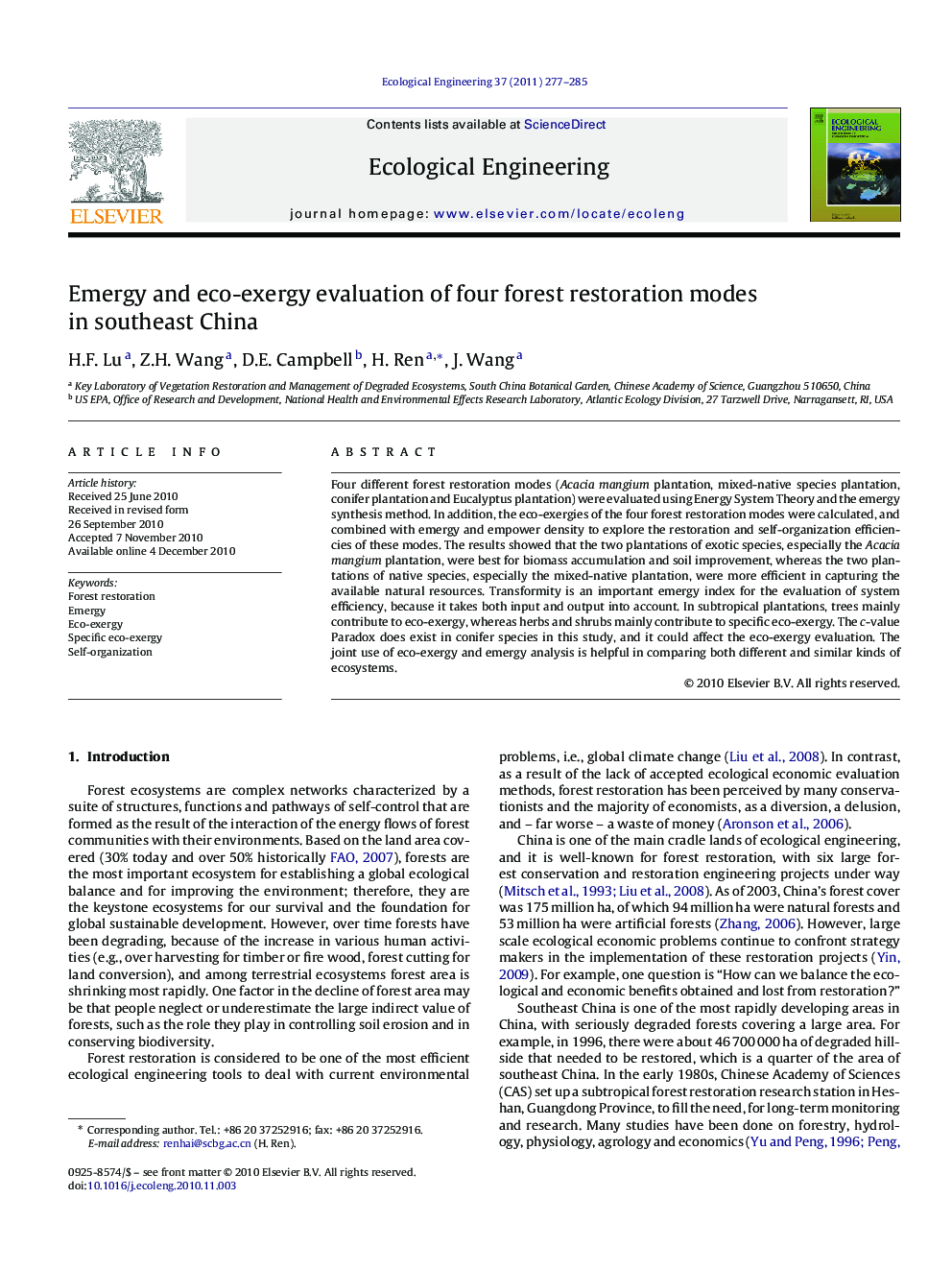| Article ID | Journal | Published Year | Pages | File Type |
|---|---|---|---|---|
| 6302851 | Ecological Engineering | 2011 | 9 Pages |
Abstract
Four different forest restoration modes (Acacia mangium plantation, mixed-native species plantation, conifer plantation and Eucalyptus plantation) were evaluated using Energy System Theory and the emergy synthesis method. In addition, the eco-exergies of the four forest restoration modes were calculated, and combined with emergy and empower density to explore the restoration and self-organization efficiencies of these modes. The results showed that the two plantations of exotic species, especially the Acacia mangium plantation, were best for biomass accumulation and soil improvement, whereas the two plantations of native species, especially the mixed-native plantation, were more efficient in capturing the available natural resources. Transformity is an important emergy index for the evaluation of system efficiency, because it takes both input and output into account. In subtropical plantations, trees mainly contribute to eco-exergy, whereas herbs and shrubs mainly contribute to specific eco-exergy. The c-value Paradox does exist in conifer species in this study, and it could affect the eco-exergy evaluation. The joint use of eco-exergy and emergy analysis is helpful in comparing both different and similar kinds of ecosystems.
Related Topics
Life Sciences
Agricultural and Biological Sciences
Ecology, Evolution, Behavior and Systematics
Authors
H.F. Lu, Z.H. Wang, D.E. Campbell, H. Ren, J. Wang,
